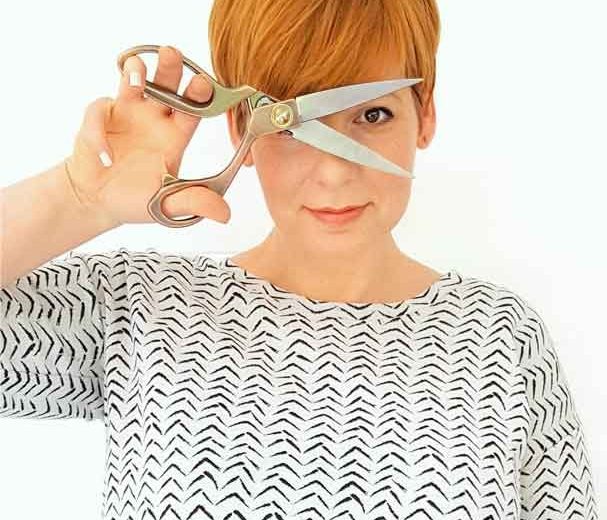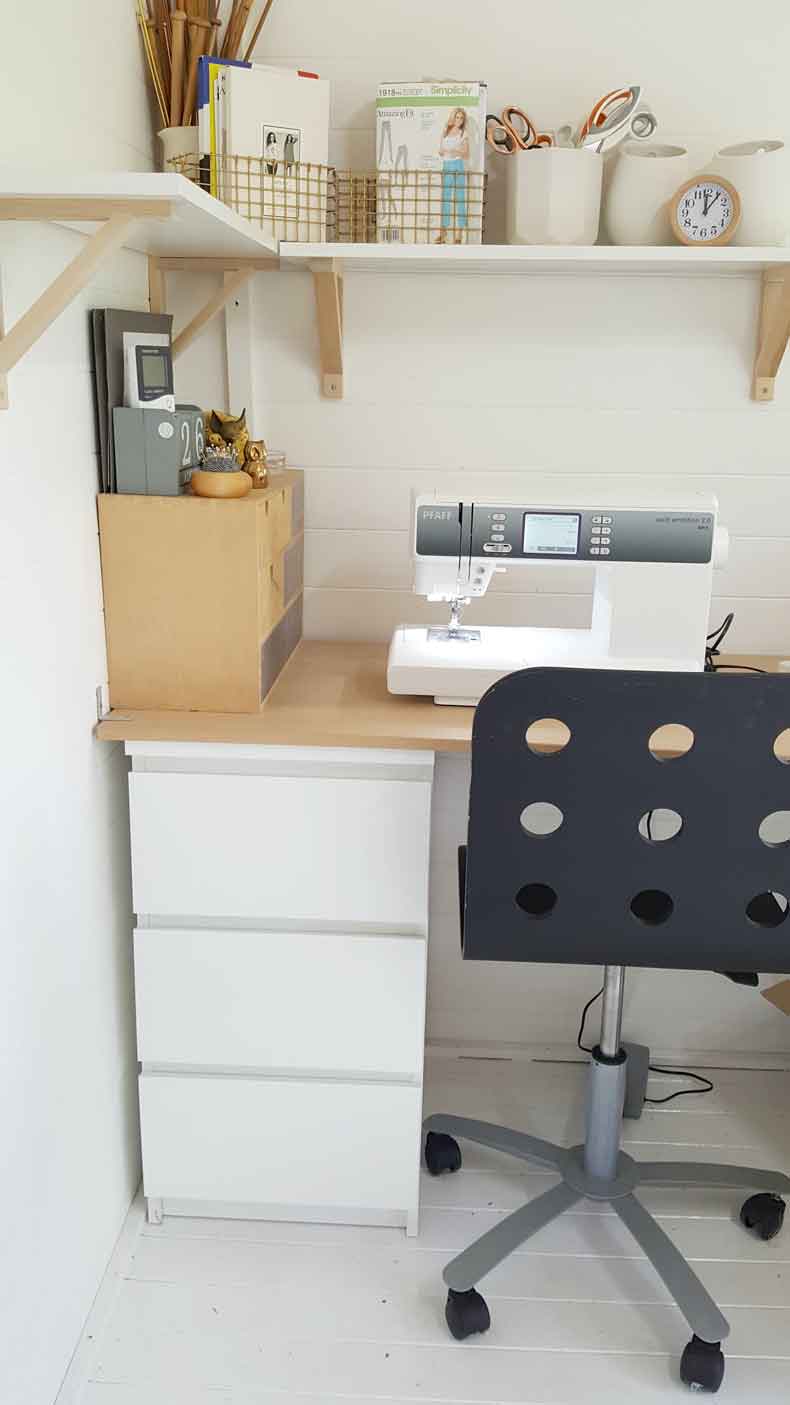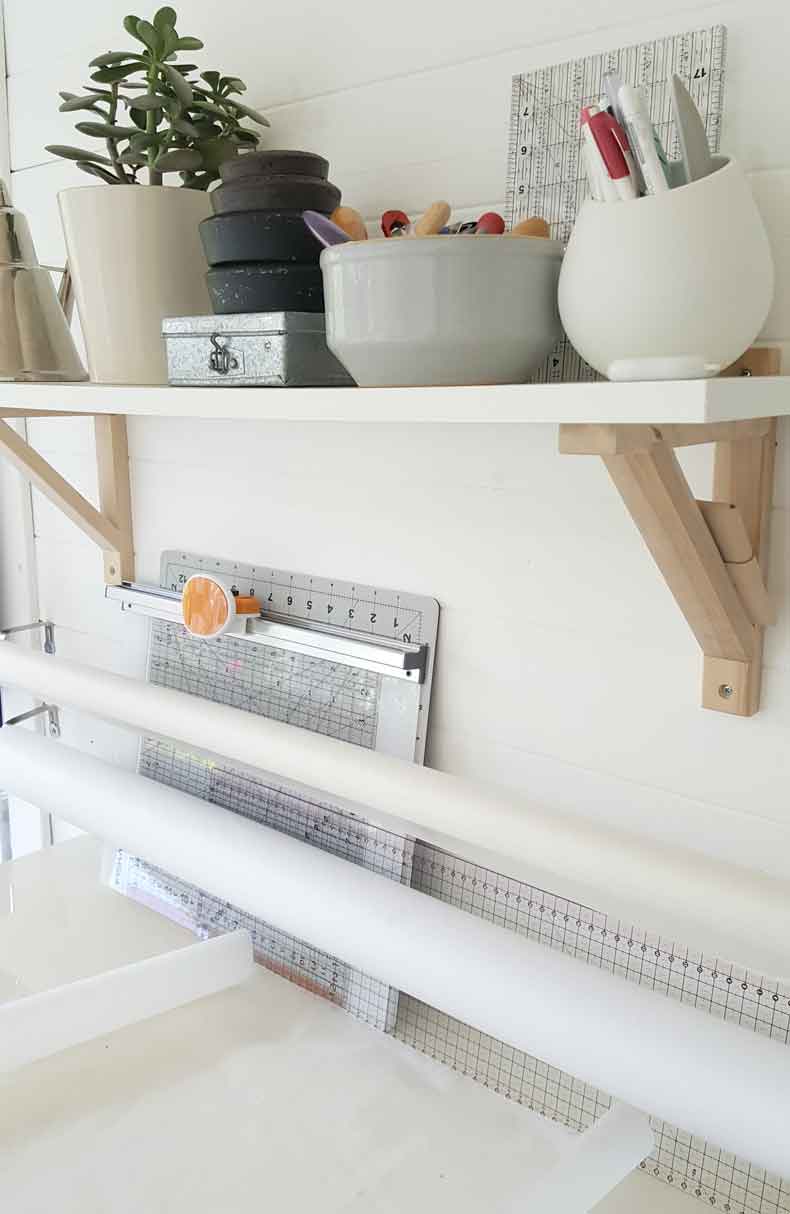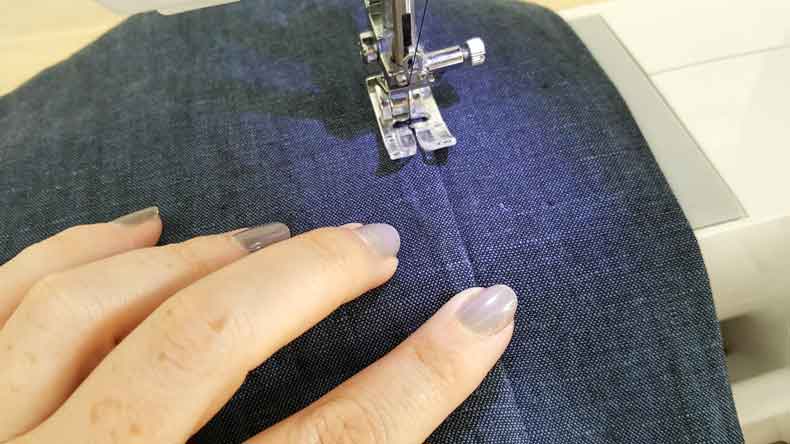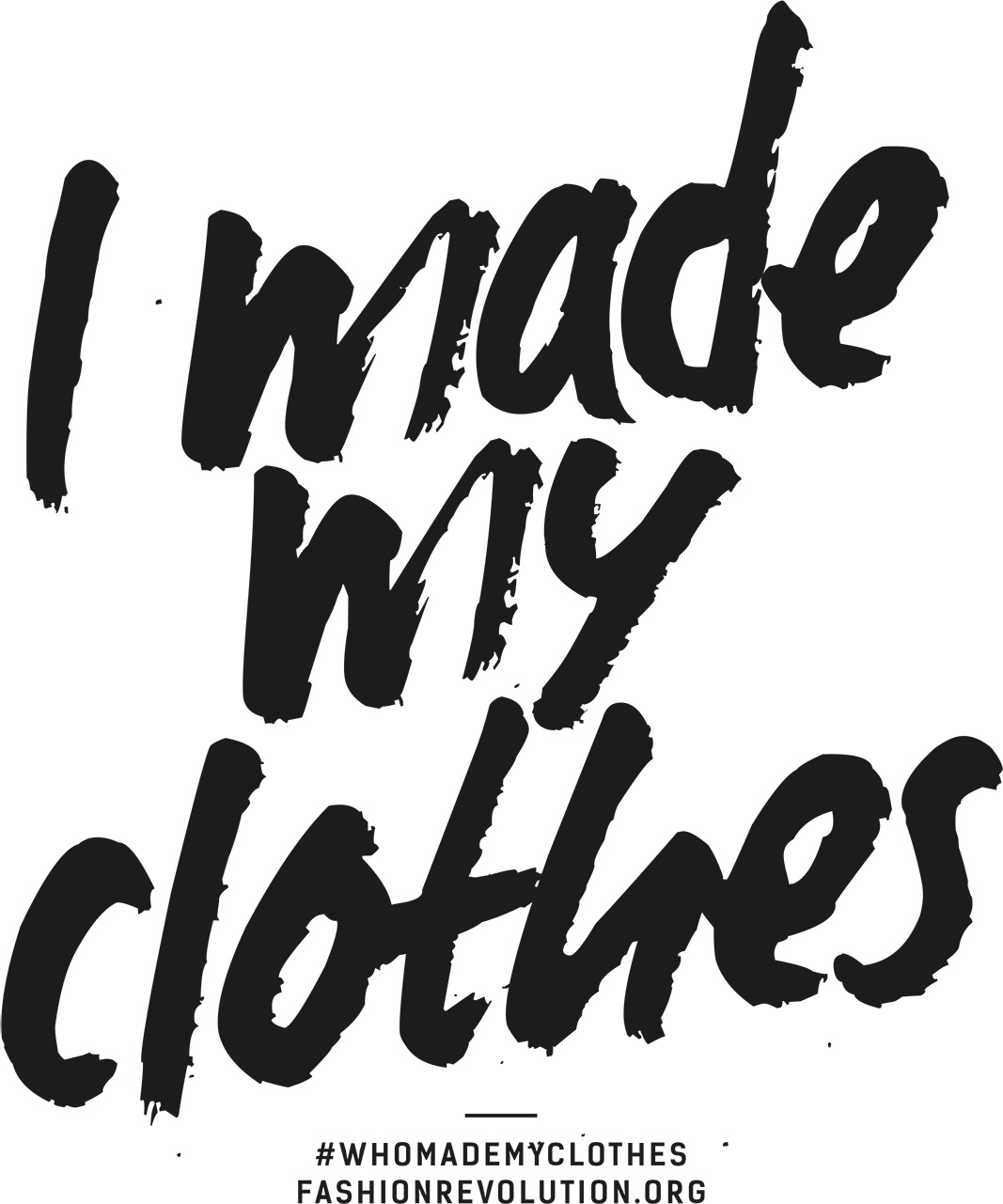>> in German
As part of the Fashion Revolution blog, I have already pointed to the sewing challenge Me Made May by Zoe. Such challenges are a great opportunities to interact with many other seamstresses, to prove ones own skills and a great pool of diverse inspirations!
Even Portia Lawrie – I just love this name and can not write it enough – launched such a challenge a few years ago and since 2011 regularly hosts “The Refashioners“. As the name implies, it is about refashioning old and bring new life to them.
I think this project wonderfully matches with our Fashion Revolution Week blog tour and I asked Portia a few questions about “The Refashioners” and her own relationship to clothing.
Interview with Portia Lawrie from the Blog “Makery“
Dear Portia, please just tell us „some facts“ about you. Where do you live, what is your profession and how did you come up with starting a DIY blog?
I live in a rural part of Essex, where I work from a summerhouse at the bottom of our garden, drinking coffee and listening to music! I started Makery (my blog) back in 2010. Originally simply as a personal blog to track my progress as I learnt to sew. But it quickly snowballed; as did my passion for sewing. And today I work part time writing sewing related content for online and print media.
Since 2011 you are organizing „The Refashioners“ challenge. Basically it’s about that you invite bloggers to refashion a garment. Could you explain this challenge more detailed and tell us what was your intention? Is it that you also wanted to focus on garments as a sustainable product and that we should take more care about them?
The intention of The Refashioners (which started in 2011) is to encourage sewists to look at old clothes in a new light. To not simply buy more fabric….but to consider old and unloved garments as a potential source of fabric too AND to discover the wonderful creative challenge that comes from refashioning. I also felt that refashioning had a bit of an image problem. I wanted to show that it could be cool, creative, edgy, and fashion forward. So each year we throw down the gauntlet and challenge people to refashion something “blah” into something amazing. We start the ball rolling with a month of inspiring refashions from some of our best known sewing bloggers. Then we throw the challenge open to the whole sewing community for another month….and at the end…a HUGE prize of sewing goodies for the winner of the community challenge. The Refashioners isn’t JUST about sustainability. But that’s a big part of it. Some people refashion with sustainability as their primary motivation. Some do it for the creative challenge and some do it because it’s so economical. But whatever the motivation…refashioning is undeniably “right up there” when it come to sustainability and slow fashion options.
Through The Refashioners you obviously „met“- although most virtually I guess – a lot of really creative and fascinating people. Could you tell us who or what project impressed you most?
Ha ha! I cannot POSSIBLY answer this one, lol! So many projects floor me for so many different reasons. I love projects that are elaborate transformations but equally I love simple changes that can transform just as effectively. It’s the infinite possibilities that are so exciting. But yes…I have met (some virtually & some in person) some amazing folk. Interacting with our amazing online sewing community is one of the many great things about community wide challenges like The Refashioners and others like it.
Concerning yourself, how do you deal with garments in general. Do you make most of your garments yourself or do you buy sustainable and fair produced clothes? If the latter do you have some favorites? My wardrobe is a mix of handmade from scratch, thrifted/secondhand and refashioned items. I rarely buy anything new apart from shoes, bags and underwear; (and at some point I will probably tackle those.) So if it’s not handmade by me, it’s usually secondhand from a charity shop. Initiatives like FashRev have made me much more conscious of the “back story” of anything I do buy. There are brands that I will avoid completely now (even in charity shops) because I figure, if they can afford to sell something that cheaply, then that cost is being cut somewhere down the supply chain. Someone somewhere is paying what I’m not. I don’t want to be a part of that anymore. I’d rather not have it, make it myself, or pay more for an item where the maker has a safe and secure working environment AND been fairly paid for their time and skill. As makers ourselves, we should be able to appreciate that part more than most. As makers….perhaps our bigger question is “who made my fabric?”.
I have seen that you were announced as 2018 best Instagram Accounts to follow by Williamgee Haberdashy. What do you want to convey through your Instagram account and what does Social Media in general mean to you?
That was a lovely compliment to receive 😊I’m not really trying to convey anything specific in my IG feed. I guess I’m sharing what’s important to me, what I like, what I think, in what I post but it’s more of a stream of consciousness thing than a specific and targeted “message”. It’s important to me that visually it “flows” but I’m kinda like that with anything I “make”. For me it’s more about having a conversation and interacting. IG in particular is my hang out spot where I go to have those conversations. Sometimes it’s a bit of witty banter. Sometimes its a bit deeper than that. It’s not always about sewing. Sometimes I don’t feel like hanging out at all. Sometimes I want to be a part of all the conversations. It really is a social thing for me. Sewing can be quite a solitary pursuit and if you don’t have local friends who share your passion, social media is such a great way to “find your tribe”.
The Fashion Revolution Week was iniciated as a kind of remembrance week on the Rana Plaza factory collapse which killed 1138 people and injured many more in 2013. Do you think that there is a Fashion Revolution going on and how do you think we can raise awareness to especially younger people not to buy so many and above all cheap and badly produced garments but to think about quality and sustainability?
There is absolutely a revolution occurring. And long may it continue. But it’s a much bigger issue than just changing peoples attitudes to how they value clothing. The biggest single factor in the Rana Plaza collapse was money. Cost cutting to feed the demand for cheap clothing. But the demand for cheap clothing is not just fed by fast fashion and fast fix consumerism. That’s one side of the narrative, yes. And initiatives like FashRev are doing a great job in changing that. But there’s another, less acknowledged side to that narrative. It’s also fed by poverty here at home. When families have to choose between heating or eating , ethical choices become. It’s easy to choose an £80 ethically produced t shirt over a £5 supermarket one when you have the disposable income to do that. But if your electricity is about to be cut off, then you’d probably be better off spending that £80 on your electricity bill and buying the £5 the shirt from the supermarket. You mention young people specifically. I think young people are probably the most well informed and socially conscious of us all. They buy the cheap clothes partly because that’s all they can afford, and partly because they want to keep up with new trends. There will always be a demand for cheap clothing as long as there are people that cannot afford to buy ethical alternatives. If we can continue to remove the stigma attached to secondhand clothing and normalise it as an ethical option; If we can continue to encourage people to learn the skills to refashion and make their own clothes as another more ethical option; that will go some way towards enabling those at the lower end of the income scale (including young people) to make more ethical choices. Addressing pay and conditions for garment workers is vital. But while the conditions that create the demand for cheap clothing still exist at home….we won’t be fully addressing the source of the issue. Attitudes and awareness is only one side of the story. At the moment we are in a wider vicious cycle of poverty creating poverty and that is a wider socio-political issue.
Do you think that there is a growing consciousness in the sewing community? Like that people start to sew because they do not want to support an industry that is known for its unfair working conditions and awkward impacts on the environment?
Most definitely. I think many people sew for that reason. But be careful. Fabric manufacturing can be just as exploitative as garment manufacturing. It’s just as easy to get caught up in that exploitative cycle if you are not conscious about your purchasing. Overconsuming or wasting fabric. Buying cheaply produced fabric. It’s no better ethically or environmentally than the fast fashion we are trying to avoid. Buy less….but buy well. Make less…..but make it well.
Wouldn’t it be great to have „Refashioning“ as a compulsory subject in school?
I think an appreciation for making clothes in general. Bring back textiles as a curriculum subject I say!! If you know how long it takes you to make a t shirt…..you’ll know when to recognise a fair price and an exploitative one; and you won’t mind paying the fair one even if you don’t make your own clothes. When you pay a bit more, you’re also more likely to repair than throw away!
Dear Portia, thank you very much for this straightforward interview and giving us an insight to your clear attitude. I am looking forward to the next “The Refashioners” Challenge with surely again extraordinary results.
*
In the interview, Portia also talks about the fact that ultimately sustainability and ecological awareness when sewing also depends on which fabrics or materials you choose. In this context I would like to recommend you True Fabrics from Hamburg .
True Fabrics is an online shop or better fabric trader with social conscience and a wide selection of unique fabrics from all around the world. True Fabrics works with small and medium textile producers, e.g. from Ghana, Togo, South Africa, Nepal, Australia, Guatemala or India. They want to promote traditional crafts, promote cultural diversity and ensure ecological and social processes. And: 10% of the purchase goes directly into social aid projects.
***
TRUE STORYWhat is our vision, what are our goals, who are our suppliers?
We want to make the creation of our unique fabrics transparent – from their production through to delivery to our customers – and want to fulfill the various facets of sustainability in the best possible way. For us, sustainability means making our own processes environmentally friendly, using ecologically harmless raw materials and components, and contributing to fair working conditions and fair salaries for the employees of our suppliers (you can find a list of the concrete indexes here). The conditions regarding the exchange as well as the production methods and standards vary widely in the different countries, whereby each supplier covers an individual profile of sustainability aspects. Every supplier has his own true story. (…)
***
If you want to try the variety and quality of True Fabrics, then just leave a comment under this post until today (28.4.) 12 p.m. CET. I’m giving away a 25% for True Fabrics coupon today!
*
The Statement Shopper from Lanius goes to Resa. Congratulations!
